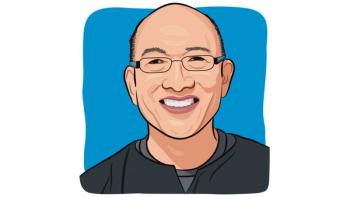
Swimming to Improve Cancer Symptoms
A cancer survivor describes how happy she was to return to the public swimming pool after getting her COVID-19 vaccine.
One of the first things I did after I completed my COVID-19 vaccinations was return to swimming laps in a pool. I went early on a Saturday morning to my local recreation center, almost tiptoeing into a place I had avoided for more than a year. Within an hour, I was transformed into my old self, a woman who swims not only because it helps her lymphedema but because it makes her feel comfortable in her own skin.
I love being back in the pool. Every time I swim, even if lymphedema is what got me to start swimming laps in a pool after cancer treatment, I feel blessed to be able to move even if I am no Olympic medalist. When I glide, I lose myself in the water. Movements help with agility and with peace of mind. As I explain to others how much I love swimming, most people smile with happiness that I am happy. They accept this choice.
Others, however, tell me they would never go into a pool and remind me of the risk of chemicals in pool water. Why? In 2010,
Should I let warnings rain on my parade? Should I fear further DNA damage? I do every day, truth be told. If I worried about every single possible source of cancer risk, I would not leave my bed. Instead, I choose to trust my recreation center’s handling of chemicals. I do not spend too much time in the water, and I bathe well after I swim. Bottom line, I have convinced myself that swimming laps once or twice a week is not going to hurt me.
That belief is grounded in the full findings of the widely cited study: “Our findings support potential genotoxic effects of exposure to DBPs from swimming pools. The positive health effects gained by swimming could be increased by reducing the potential health risks of pool water.”
Mountain lakes and oceans are wonderful, I know. I love to swim in a tepid mountain lake. I think I swam in every swimming hole Austin, Texas, had to offer when I lived there, including the famous Hippie Hollow. I also love to swim and float in the ocean. I have a great memory of an afternoon I spent in the Dead Sea with a friend, another cancer survivor, who until her death reminded me of how happy we were that special day. One day, I would love to swim in a salt pool to see what it is like.
Still, a municipal pool is close at hand, my town pool being more accessible to me than the Atlantic Ocean or Austin’s Barton Springs. I have swum in such pools since I was 10 years old, when I discovered I could ride my bike to Maxcy Gregg Park in Columbia, South Carolina, on weekdays when my father could not drive me to some pond. Although I respect people who avoid pools and am mindful of warnings, I choose to believe that my choice to swim in one has a significant effect on my overall health.
Once people like me have experienced cancer, even simple choices can trigger worries about cancer risks both past or future. For now, worries about avoiding a carcinogen or gene mutation drift away when I am swimming.
For more news on cancer updates, research and education, don’t forget to




